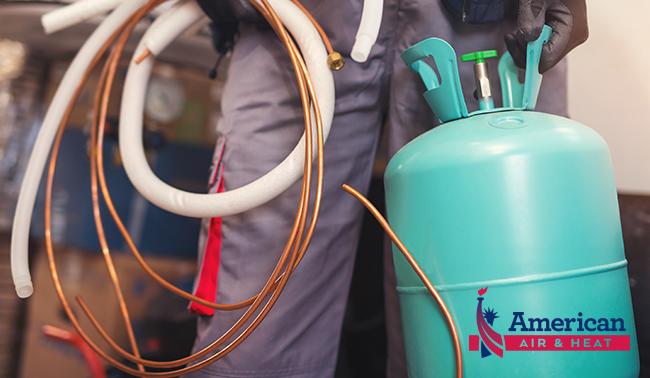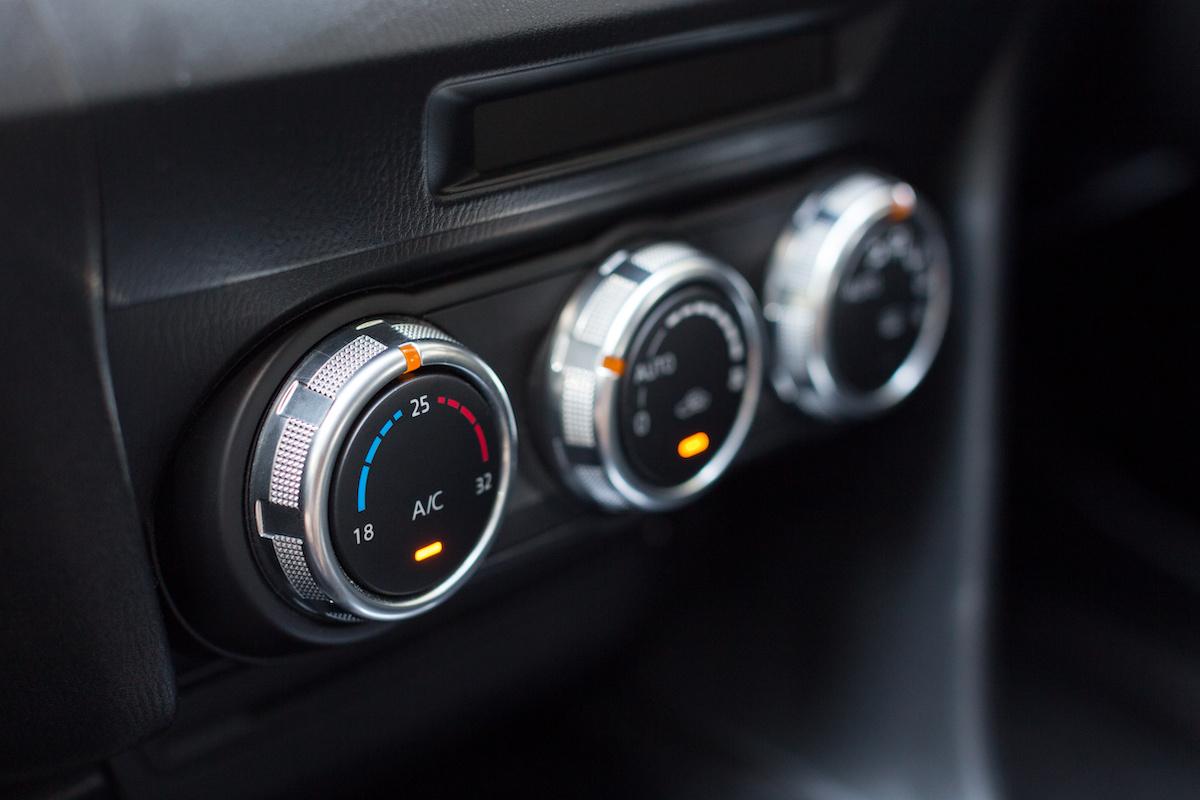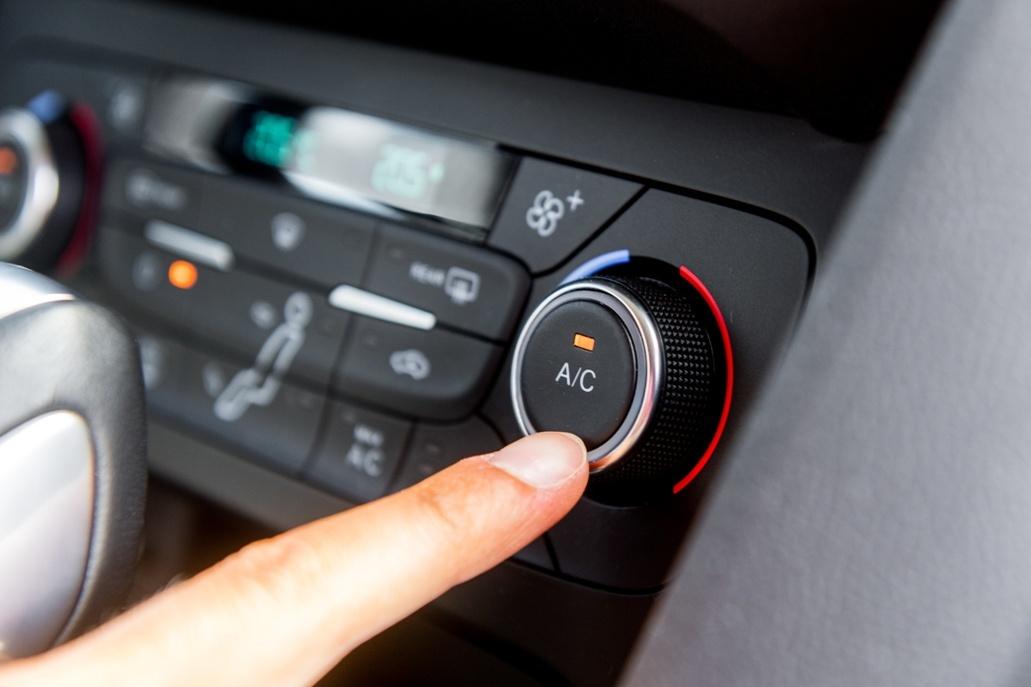Is the air conditioning system in your car not as cold as it should be? A low level of refrigerant, also known as Freon, is the culprit in most cases. Just like a car tire losing its pressure over time, an AC system also loses charge during its lifetime. If the system is losing fluid, either for natural reasons or for a leak, you have to refill it. Do you know how to put Freon in car?
Contents
Why Freon Is Important for the AC System?
Air conditioning is a closed system. It exchanges heat from the inside of the car to the outside environment. How does it do this? With the help of the refrigerant.
There are two big surface areas where the system sends the gas through a circuit of tubes. These areas function like sinks that either send out or absorb thermal energy.

The refrigerant remains in a liquid form inside the AC system. But it absorbs the cabin heat and starts boiling at a point. Then, it evaporates into a gaseous form only to be condensed into the liquid state again. At this stage, the thermal energy from this transformation goes to the condenser before the radiator.
To have a fully functioning air conditioning, it must have the right amount of Freon in the system. An undercharged or overcharged system will result in poor performance.
How to Put Freon In Car: A Step-by-Step Process
Answering for the question how to put freon in a car, here is our solution: If there is a leak in the air conditioning, you have to go to a mechanic. There are some rubber seals and O-rings that are likely to wear out over time. Topping up a leaked system is not going to work.
Things You Need
- Refrigerant/Freon
- A recharge hose with gauge
- A thermometer
If you don’t have a recharge hose, try to borrow it from your local A/C supply shop or rent from somewhere.
Instructions for How to Put Freon in Car
Before topping up the AC system, park the car in a well-lighted and well-ventilated place. Also, wear a pair of protective goggles, thick waterproof gloves, and a long-sleeved shirt. Seek medical help immediately if the refrigerant touches your bare skin. It could cause frostbite in the affected area. Do not start the refilling process unless you have followed each of these safety measures. Now you are all set to putting freon in your car.
Start the vehicle and the AC
Kick off the engine and increase the air conditioner’s coldness to the maximum level. Take the reading by putting a thermometer inside the vent. A normal reading at this stage will be 18 to 21°C.
You may instinctively try to put the back of your hand near the vent to see if it is cold. Don’t do that. It is likely to be biting cold.
SEE MORE
- Removing Refrigerant From Car AC in an Easy and Safe Way
- An Easy Explanation of the Car AC Mechanism
Examine the Compressor and Clutch
Refilling Freon is necessary if the clutch is engaged at more than 21°C. So car owners need to examine the compressor and clutch, since there might be an engaged clutch indicating a failed compressor, or too low level of refrigerant, or a not activated clutch.
Any compressor problem requires professional servicing and checks the clutch’s connections and fuses if it is not working.
Hook up the Hose
Hook the refill hose to the low-pressure port. If you don’t know where it is, look around the exit path of the firewall. The port is likely to have a black or deep-gray cap or a cap with the letter ‘L’ on it. The hose will fit this port only, not the larger one (high-pressure port).
Take a Gauge Reading
The gauge attached to the hose will show the pressure reading of the air conditioning system.
With the clutch ON, less than 40psi reading means the AC is undercharged while more than 50psi indicates the opposite. In case of an overcharged system, release the excess refrigerant into an empty tank.
Refill with Freon
Refilling is an important step. To have the ideal refilling environment, make sure that the compressor and the engaged clutch are spinning, and the system vacuum is turned on.
If the Freon is in a tank, open the tank’s cap. If it is in an aerosol can, pull the trigger. Give a pause after a few seconds and then do it again. Keep doing this until the system is refilled.

Check the Cabin Temperature
Put the thermometer in front of the AC vent again and it should read 18°C now. If the temperature does not become colder than it was, you will need professional help to figure out the issue.
Learning how to put Freon in the car is a useful maintenance tip to equip yourself with to save time and money with a mechanic. More importantly, you will be able to timely and frequently provide your beloved vehicle with proper care in your own garage to ensure it will run smoothly without problems.
Frequently Asked Questions
Understanding how to put Freon in car is one of the most basic yet essential knowledge when it comes to air conditioning. In order to help car owners acknowledge about car’s AC, our car experts gather all the necessary questions around this subject:
How long does it take to put Freon in a car?
30 minutes is the time car owners need in order to install freon in their automobiles. If you have a low system, the compressor might not start. It requires around 10 to 15 minutes in order to charge the acceptable amount of freon. So drivers need 45 minutes in total.
How do I know if my car AC needs recharging?
In order to know when your car AC needs to be recharge, these are three most significant signs:
Air Conditioner Clutch won’t Engage
Usually when the air conditioner reaches its maximum capacity, the clutch engaging starts to click and drivers can hear it very well. The reason for this is that the clutch engages with the AC pressure switch’s signal in order to read the level of system pressure. For this purpose, when AC reaches low level, the pressure switch cannot activate, leading to no clutch engaging. This problem stops the system from circulating.
Cooling capability Decreases
One of the most famous symptoms that tells you the automobiles needs recharging is that the overall cooling capability dramatically drops. Why is this a clear signal? Since the system of air conditioning works by circulating a pressurized refrigerant, if the air is not blowing cold air at all, you need to charge your AC fast.
Signs of Refrigerant Leaks
Last but not least, there will be signs of refrigerant leakage. There will be greasy film on many AC fittings or components underneath the automobiles. If there is any, this might be a sign that you need to recharge your AC.
Do it yourself charge car AC?
Understanding all the signals to know when to recharge the air conditioner of the car, now it is time for drivers to know the method to recharge it by themselves. Here is how:
Purchase a charge kit
You cannot charge any batteries or air conditioners without the charger, and the charge kit for car AC can be bought in any automobile mechanics shop.
The Low Side Port
In order to charge the AC, the low side port is the part you need to connect with the charge kit.
Connect Can of Refrigerant
The next step you want to do is to attach the can of refrigerant. Drivers are suggested to screw the dispenser hose, then gauge onto it. Don’t forget to check to see if there are any leaks.
Why is the AC in my car not blowing cold air?
One of the most common issues of AC not blowing cold air is leaks. You can check this quite easily. Another popular reason is because of the compressor. The list of common causes of broken AC can be cooling fan issue, clogged filter, radiator problem,…
How much does it cost to add Freon?
A Freon refill costs around $150. Even though the price depends on the type and size of the HVAC unit, $100 to $400 for a refill is the average price level. However, there are some expectations: old large r22 units can cost around $600 or even more expensive.
Will AC compressor turn on without freon?
Yes. Car’s air conditioner can work at lessened cooling power even when there is less refrigerant than normal. However, it will sustain heavy damage and eventually leads to a full system breakdown. And when the compressor is broken, it requires a replacement of the entire AC.
How many cans of Freon does a car take?
3 cans are the maximum for every car.



